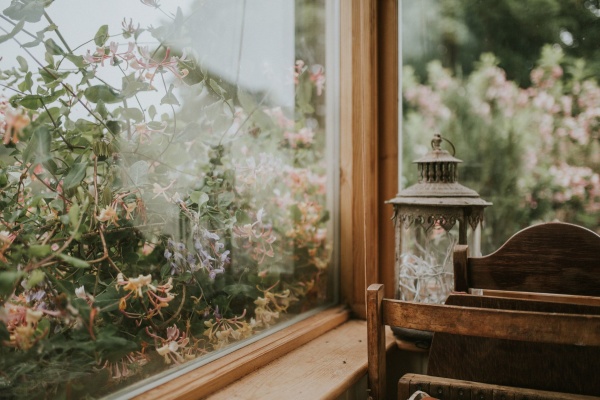
Gardening in the Big City
Technology overuse means that we’re not likely to spend as much time outdoors as we’d perhaps like to. One way of combatting this is gardening, whether you live in an apartment with a balcony or windowbox, or a house with a garden, it’s an easy way to spend some time away from your screen. In this article, we’d like to share our thoughts on collaborative gardening projects in urban areas.
Is it possible to cultivate vegetable gardens in a city center?
In recent years we’ve noticed an increase in several initiatives, most of which focus on bringing undeveloped areas and rarely visited places back to life with the help of their residents. The world is undergoing constant transformation, improvements and changes.
Due to a rise in technology, it can be easy not to notice that we as human beings, are collectively respsonible for destroying the world around us. The growth of industry and the economy ruins the environment, irreversibly changing the way it functions. Natural disasters force us to find solutions that could stop or at least slow down lasting effects. However, most of us unaffected by such disasters often feel detached from the situation.
In several European countries, more allotments were created after the war, mainly to counteract food shortages. Growing your own produce, even in small amounts such as kitchen herb gardens means less food waste and leads to embracing a healthier way of life.
Urban gardening is still a developing trend
In large cities green spaces are scarce, so it’s high time we develop the idea of combining ecology with architecture to create green roofs and walls, as well as manage the urban wasteland so that plants will become a bigger part of our lives, and vegetables and fruits can be grown in green parks.
Urban gardening has found itself in the top ten of the world’s horticultural trends. Gardens, once widely regarded as rural gardens, have even entered the White House in the United States. Michelle Obama cultivated a garden, planted herbs, vegetables and flower beds to teach children where tomatoes, radishes, strawberries and apples come from, they were surprised to hear that the answer was not the supermarket. Educating future generations will ensure a lasting positive effect on our planet.
Sky Garden, London
Google has long been recognized as a very employee friendly company. In addition to the large creative building being made of recycled materials and outfitted with gaming equipment and cafes, employees can grow their own vegetables and herbs on the 9th floor. Gardening has become very popular among the employees and everything they grow on their own beds can be taken home. This is another step on the way to sustainable business development.
Vertical Farm, Linköping
The largest (54 meter high) and most eco-friendly building is located in Sweden, in Linköping. It is the world’s first skyscraper for vertical crop raising. The vertical farm was designed by engineers from Sweco and Plantagon. The design of the building intended to use the city’s energy potential to create optimal conditions for organic cultivation on all levels.
Watch this video which presents a very similar structure.
Edible Park, The Hague
The public vegetable garden in The Hague was created by the British artist Nils Norman , it is a project which connects art while bringing about tangible benefits for the residents. With an area of 80 m2 plenty of vegetables and herbs are grown. The building with a garden on it is situated in the middle of an edible park, it’s also a place to relax, an information point and a place to store tools.
Prinzessinnengärten, Berlin
Prinzessinnengärten in Berlin grew out of the vision of two guys who were completely unfamiliar with horticulture. Robert Shaw, a filmmaker, and Marco Claussen, restaurateur and photographer, set up the Nomadisch Grün (the Green Nomad) organization for this purpose.
While on a trip to Cuba, Robert saw that people were setting up common gardens on abandoned plots of land. They grow vegetables on them, but they come also to meet, talk, relax and have picnics. The garden is hidden in the shadow of the Berlin Wall and overlaps the side of an old railway. Residents built flowerbeds using old plastic boxes.
The Growroom by IKEA, Copenhagen, the whole world
In 2015, IKEA opened Space10 in an abandoned Copenhagen fish processing plant. This is an open innovation laboratory where products of the future and new ways of meeting the needs of consumers are tested. The Swedish company organizes workshops there with experts in the areas of design, art and technology. The latest Space10 project is The Growroom , a large, multistory, spherical garden. Architects Sine Lindholm and Mads-Ulrik Husum designed it to cater to the needs of the city’s residents who do not have their own gardens.
This year, in February, Space10 published a free guide to building The Growroom. Unlike to the rest of IKEA’s projects, this time you need to source the wood yourself. To create The Growroom you need a hammer, 17 pieces of plywood, 500 screws and a woodworking or laser cutting machine. Of course, builders also have to take care of the plants.
Space10 has decided to put the instructions online, because sending it around the world along with the materials needed to build a spherical garden would be in direct contrast to the idea of the whole project. Growrooms will soon be available in many cities such as Helsinki, Taipei, Rio de Janeiro and San Francisco.
Pollution in urban environments
After reading about all of these great gardening projects you might be wondering how we can deal with the pollution which affects urban environments.
It is a good idea to grow plants in pots and other containers. Vegetables and fruits that are grown in the city should be very well washed and peeled. Studies have shown that much of the pollution that comes into our bodies does not come from the vegetables themselves, but rather from the trace amounts of soil that we eat with them. You can also choose to grow vegetables and fruits whose edible parts have the least contact with the soil , such as fruit that grows on trees and shrubs (beans, peas, tomatoes, etc.).
Urban gardening has many advantages , it spreads knowledge, activates people, develops bonds between citizens, is a form of relaxation and is a very satisfying pastime. Vegetable gardens in the city will not solve the problem of feeding the people of Earth, but they can definitely help the locals and have a radical effect on the appearance of the city. Instead of creating more colourful flower beds, maybe it’s worth planting vegetables, fruit and herbs for vegetative compositions? We believe that urban social ‘dining gardens’ are a wonderful thing.
More importantly, these projects are mostly low budget and use urban wasteland to bring vegetation to cities. Think about the kinds of images presented to us in popular culture, in post-apocalyptic films, where after the extinction of humanity, cities are slowly overgrown by omnipresent plants. These images show that nature and how we make the most of it, should be a factor in our decision making processes.
Finally, some interesting short films and handy guides:
Is there anything you’d like to add, have we missed anything? If you’re interested in sharing your experiences with us or writing a guest post for us, send us an email via hello@mudita.com!
Please feel free to get in touch via social media (send us some photos or videos too), you can find us on Facebook, Twitter and Instagram, let’s connect! To learn more about Mudita, take a look at our website and our other posts.
If you enjoyed reading this article, please share and recommend it!
Related stories

Mudita Products Achieve Calm Tech Institute Certification
Mudita Kompakt, Harmony 2 & Bell 2 earn Platinum Tier Calm Tech Certification for promoting calm, focus, and better sleep.

Swiss Precision Meets Minimalist Design
Mudita Radiant combines Swiss craftsmanship and minimalist design. Powered by the Sellita SW200-1 Elaboré, it’s a timeless, practical field watch.

Why Everyone Is Quitting Social Media
From declining social media engagement to digital fatigue, people are quitting social network platforms. Learn how Kompakt helps reclaim focus and presence.
If you'd like to receive the best stories from our blog, keep up to date with our progress and get notified about our product releases and special discounts.